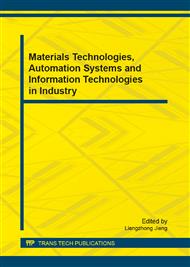p.854
p.860
p.866
p.872
p.876
p.881
p.887
p.891
p.897
Reconfigurable Spatial Sub-Chain Evolution
Abstract:
This paper investigates the built-in spatial modules extended with reconfigurable character based on reconfiguration modules in the form of spatial kinematic pairs and associated links. Known that reconfiguration modules are to be served to develop reconfiguration leading to novel structure expansion, the key issue is to assemble reconfiguration modules and to derive a reconfiguration mechanism as a self-reconfigurable set. The module exerts its reconfiguration through changing the number of mobility or type of its built-in kinematic pair and changing its combined components. Its reconfiguration characteristics come from its decomposition, transformation, degeneration and combination. It is clear that reconfiguration module extension serves as an effective category to set up the relationship and transformation categories between these reconfiguration modules. More often, there exists multiple module group solutions for a higher dimensional module and this is the key for topology reconfiguration and variation. Spatial reconfiguration process uses reconfiguration principles which is consistent with displacement group operations. The essence of reconfiguration is the reconfiguration mechanism characteristic which convert a mechanism from fixed topology to variable topology analogous to evolutionary variation. In fact, these can be the effective and available constraint information as geometrical ways to reach the special configuration states and then produce reconfigurations with special geometric and parametric dimension design.
Info:
Periodical:
Pages:
876-880
Citation:
Online since:
August 2013
Authors:
Price:
Сopyright:
© 2013 Trans Tech Publications Ltd. All Rights Reserved
Share:
Citation:


